Ford GPW 1/4-Ton Jeep Buyer’s Guide
What you should know before you buy a WW2 G-503 Ford Jeep
With the Jeep’s design having been standardized as that of the Willys MB, a second source of supply was sought. Ford was licensed to build copies of the Willys design, to which Ford assigned its model designation GPW: G meant government contract vehicle, P indicated it was an 80-inch wheelbase reconnaissance car and the W suffix indicated it used the Willys-designed engine.
Like the MB, earliest models had the maker’s name embossed in script on the rear panel. The grille was of fabricated steel construction until Jan. 6, 1942. Then, Ford introduced the stamped steel grille. Ironically, the pattern was later registered as a trademark for Chrysler’s Jeep.
Ford built its own bodies at the Lincoln plant until the fall of 1943. Then Ford began buying bodies from American Central, which was already supplying bodies to Willys.
After only a short time, representatives of Ford, Willys and the Ordnance Department met and created the composite body, which incorporated the best features of each maker’s body.
Starting in early 1944, one manufacturer (American Central Manufacturing Co.) began building bodies for both Ford and Willys. These bodies are referred to as "composite bodies" because they have characteristics of the earlier Ford and Willys bodies combined into one body type. It was used by both Ford and Willys from January 1944 onward, although a few were used during the last months of 1943.
Throughout the production of the 277,896 GPWs, Ford marked many of the components with the Ford “F” logo. Among these components were pintle hooks, fenders, bolts, etc. However, due to materials shortages, non-F parts were sometimes substituted on the assembly line.
The script Ford name on the rear panel was discontinued in July 1942. Add 20% to the value for script jeeps.
As a rule, the most readily spotted difference between the MB and the GPW involves the front cross member. This is a tubular member on Willys vehicles, and an inverted U-channel on the Ford.
Ford built the GPW at six plants: Louisville, Dallas, Edgewater, Richmond, Calif., Chester, Pa., and of course Ford’s huge Rouge complex.
Weight: 2,450 pounds
Size (LxWxH): 132” x 62” x 72”
Max Speed: 65 mph
Range: 285 miles
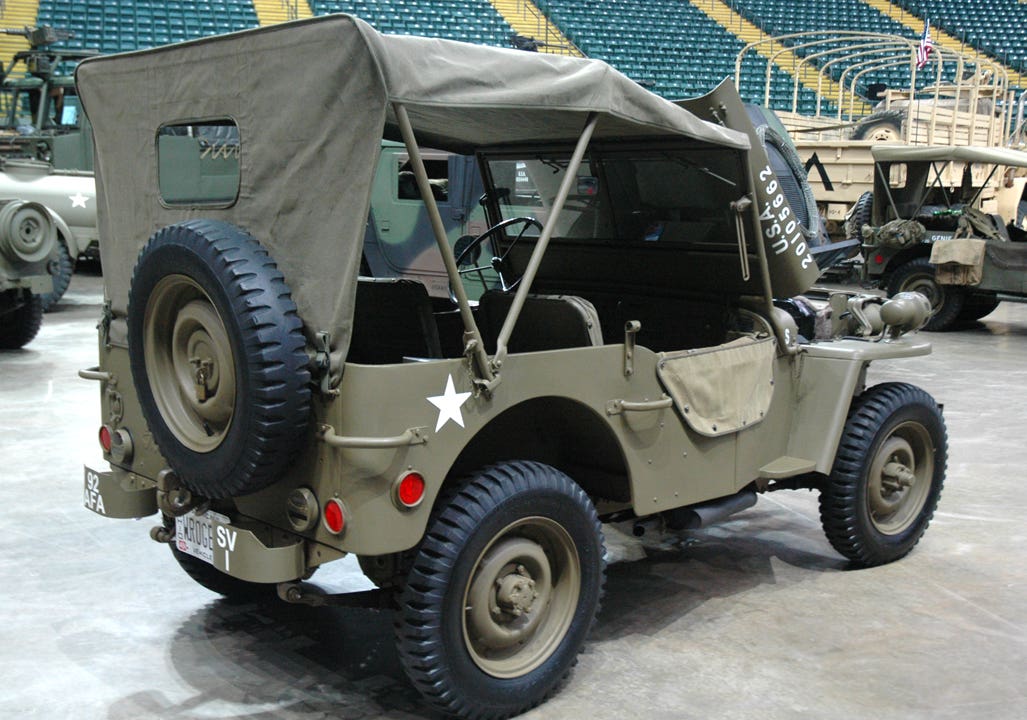
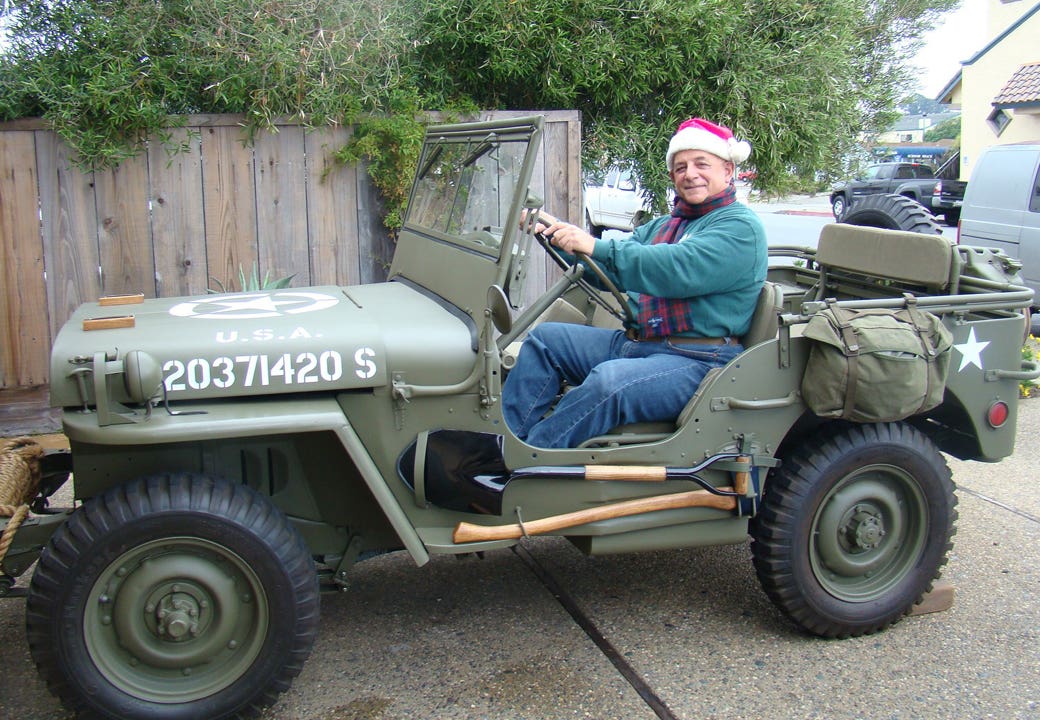
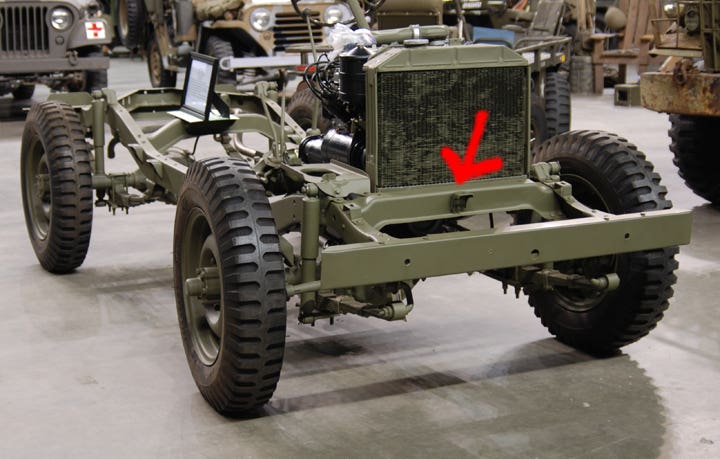

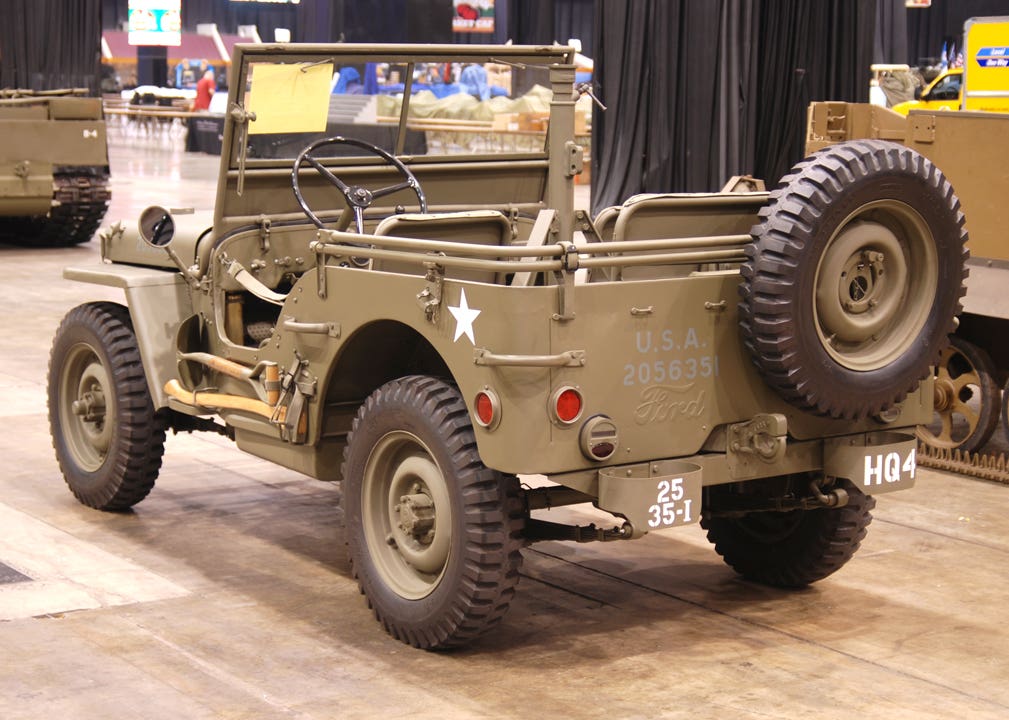
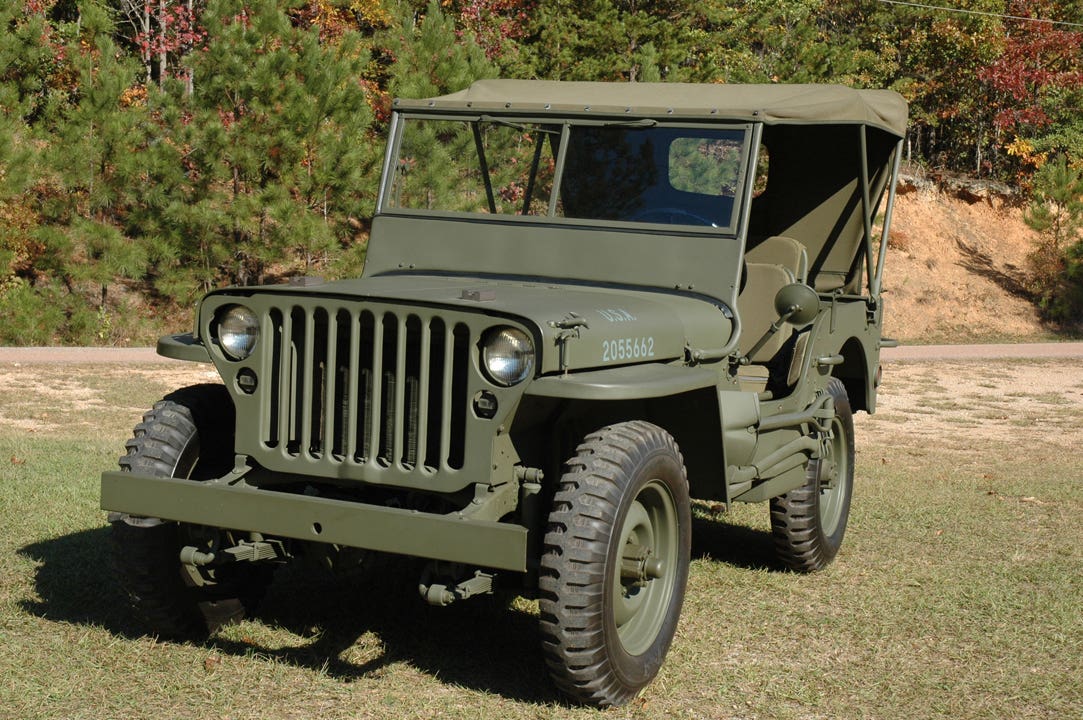
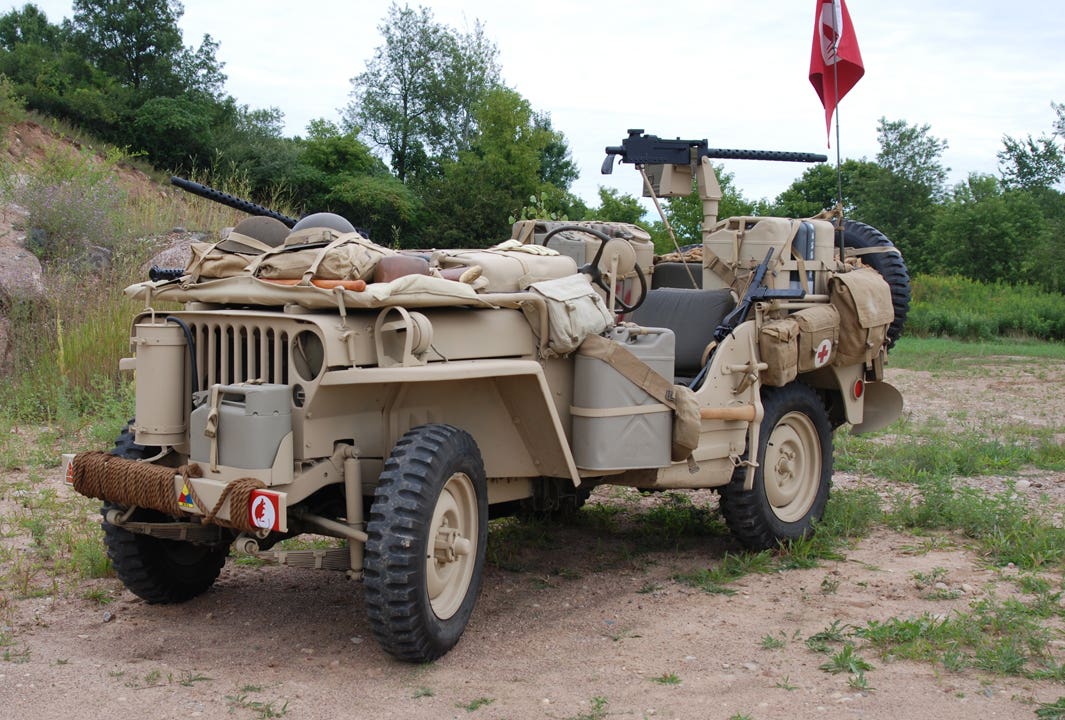
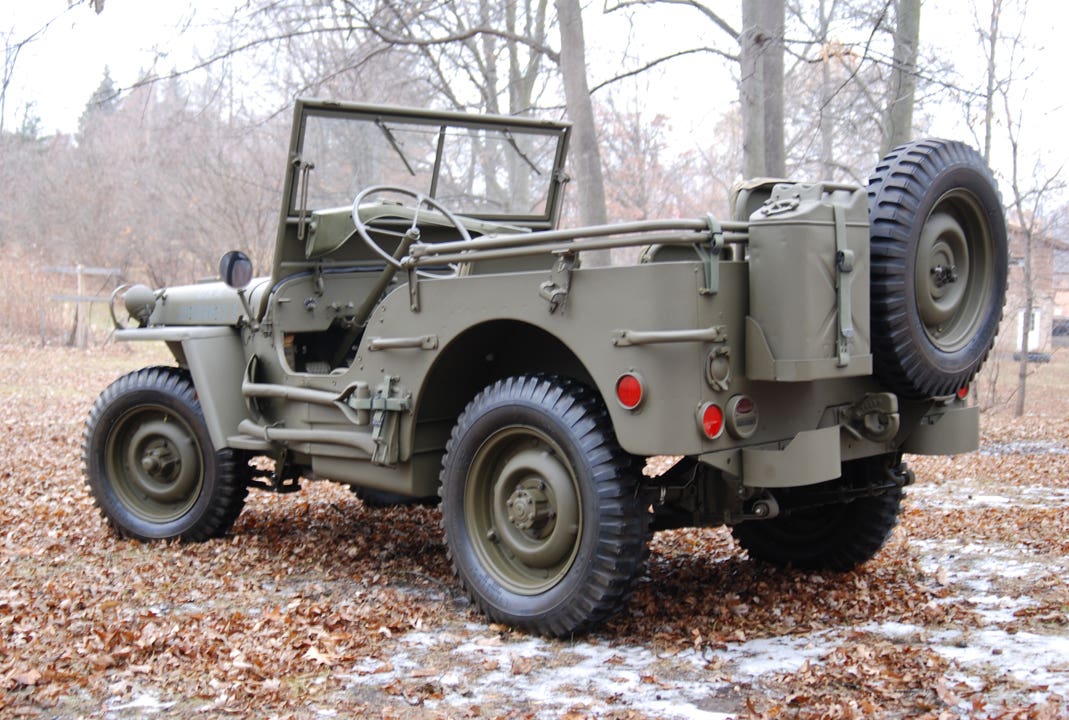
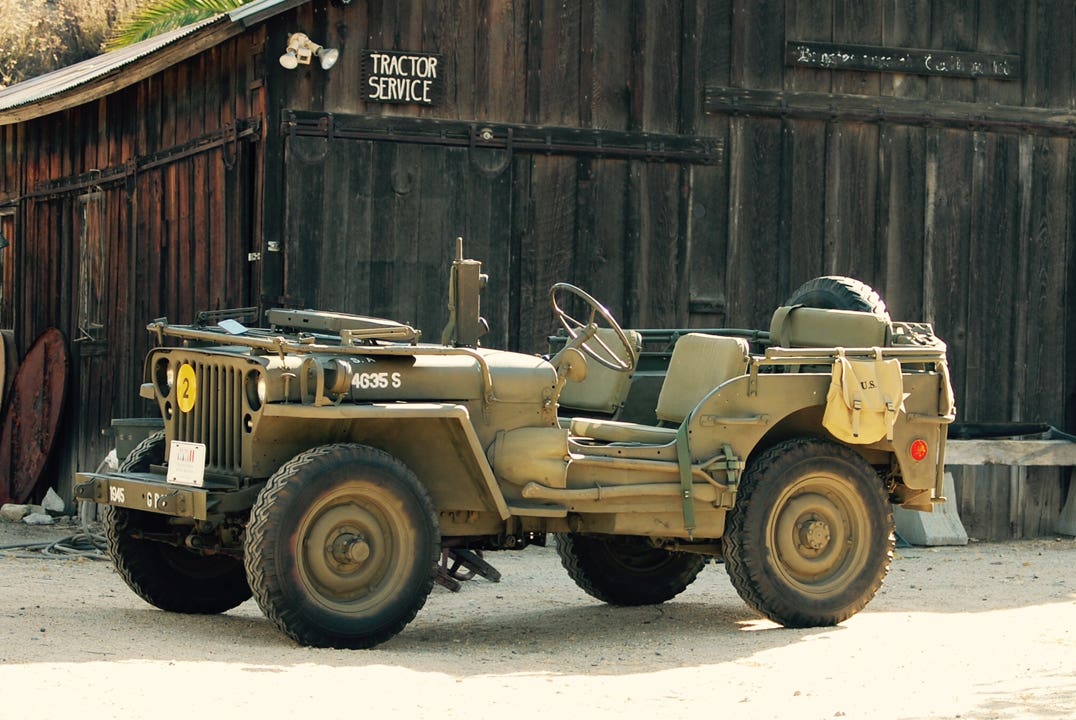
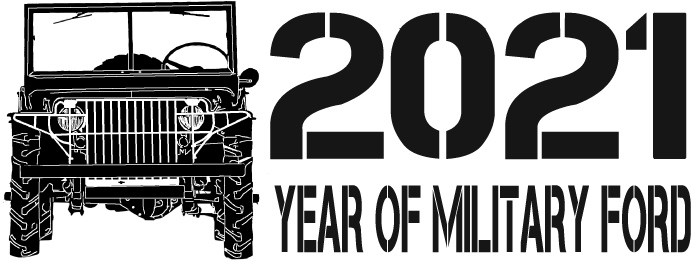

As with any military vehicle, learn as much as you can BEFORE you make the purchase. Acquiring the appropriate manuals is a crucial first step.
Condition
Military Vehicles Magazine uses a given a value based on a 1-to-6 condition grading scale as follows:
1=Excellent: Restored to maximum professional standards, or a near-perfect original.
2=Fine: Well-restored, or a combination of superior restoration and excellent original parts.
3=Very Good: Complete and operable original or older restoration, or a very good amateur restoration with all presentable and serviceable parts inside and out.
4=Good: Functional or needing only minor work to be functional. Also, a deteriorated restoration or poor amateur restoration.
5=Restorable: Needs complete restoration of body, chassis, and interior. May or may not be running, but is not wrecked, weathered or stripped to the point of being useful only for parts.
6=Parts Vehicle: Deteriorated beyond the point of restoration.
Value
You may also enjoy
*As an Amazon Associate, Military Trader / Military Vehicles earns from qualifying purchases.
From the staff of North America's no. 1 historic military vehicle source -- Military Vehicles Magazine








